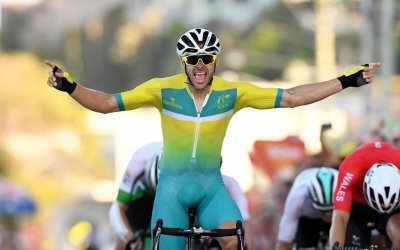BUNCH RIDING SKILLS & ETIQUETTE
Every year it seems that the events and racing calendar in Australia is growing and the biggest growth area for sure right now is the sportif type events. The challenge to overcome the duration in terms of time and distance is the personal side of these events that draws huge numbers of riders with very diverse cycling backgrounds to put it on the line and give them a go.
With the big numbers riders and quite often mass starts involved the obvious issues can arise of big bunches all hooning along together. The possibility for an inexperienced rider to make a fast group touch wheels and bring a heap of people down is quite high and it can be a very nerve racking time for all involved, so, how should we ride in a bunch environment and what are the do’s and don’ts of the Peloton?
Try to be consistent with your actions
Firstly you are not riding on your own in these situations, so, remember that there are riders following closely behind and they need to get a clear idea of how you ride and what you are doing. If you tend to swing wide in corners that is ok, but, let the rider behind know as he may well want to leave a little gap and move through on the inside. Avoid sudden braking and changes of direction and always try to maintain a steady straight line as is possible on a dirt track.
Point out major obstacles like pot holes, glass or sticks on the road
As the rider behind cannot see up the road it is your responsibility to point out obstacles such as pot holes or glass. Shout out the instruction and back this up with a gesture to point out the threat if possible.
Doing your turn on the front
This is a classic within mass participation events and the number of times I have seen or heard of a rider’s sitting on for 50km only to sprint by the guys and sometimes girls that have towed them to the finish is unbelievable. The best way to lose friends in any bunch is to be a “bludger” and sit on. Rolling through and doing your turns on the front is what allows a group to move faster than the individual on his or her own. When you do your turn you are able to hold a slightly greater speed intensity, because you can then pull off the front and sit at the back of the pack and rest straight afterwards. Getting the intensity right and making sure you are not going too hard, as you may come around a corner and be faced with a big climb. If you have pulled yourself inside out smashing it on the front only to be faced with a big climb, you may find yourself going backwards through the group and getting dropped. Smooth controlled efforts are the key and keep something in reserve just in case a big hill is just around the corner, or, someone tries to attack the bunch.
Try to hold the wheel in front
Trying to maintain an appropriate distance between your front wheel and the rider in front is more difficult and needs practice. Hang back enough to still get a draft from the peloton, but, keep very visual about upcoming issues or problems. Keep a finger ready to brake just in case, but, don’t keep dabbing the brakes or the rider behind will get very nervous. This constant braking has the same effect in the peloton as on the road in a car. There is a cascade effect and it can result in riders 20 wheels back in the group touching wheels and coming down. Make sure not to overlap wheels, as, the rider in front may have to more to one side or another and if he clips your front wheel because it was overlapped you will hit the deck and possibly take down a heap of riders in the bunch. This said, don’t allow big gaps to form as otherwise you will have to use extra energy to close the gap, or, somebody else will.
Riding down hill
When descending on the road it is important not to try and make any stupid overtaking maneuvers. Remember that the bunch is a working group and by working together you will cover the ground faster. Hooning up the inside and then having to brake hard at the next corner will only upset the group dynamic and potentially cause a crash. Remember to be smooth and think of the bigger picture, not just you flying downhill on your own. More accidents occur with greater consequence on the downhills, but, very little time is made up or gained for the risk, SO GO EASY!
Riding up hill
More often than not a hill comes right after a downhill section and as the riders in front slow down the bunch behind gets the draft and catches up often pulling right into the middle of the group. When surging like this be mindful of the line you take and don’t just cut into the bunch and cut off the rider who was just leading you along the road or down the hill. When first climbing out of the saddle to get over a steep section of road or maintain momentum there is a momentary freewheel and gravity slows the bike down. The riders directly behind you quite often can slam into your back wheel or rear mech and it could be the end of the event. When getting out of the saddle to climb keep the pressure on the pedals and try not to freewheel and slow down.
Ride just to the side and look ahead anticipating the road ahead (maintain concentration at all times)
By riding just to the side and not overlapping the wheel in front it is possible to quite often see a little of the road ahead and observe any potential obstacles or issues before you get to them. The rider in front of you might be totally focused on the wheel in front of him and not see the pot hole or oil on the road, so, anticipate all the time and be vigilant.
These are a few handy pointers to help with riding in the bunch, if done correctly a fast moving group can really cover some ground and your next PB time for the event or your greater enjoyment riding with a group and meeting new friends.
Cheers, and give me a tow the next time you see me on the road with you 😮
Fenz




